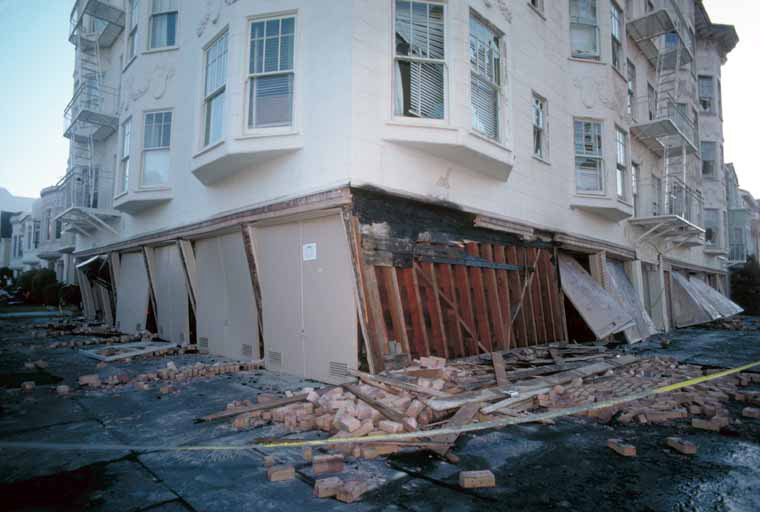Quake, quake, go away
French engineers report success in the first test of an underground seismic shield

An earthquake caused widespread damage to San Francisco in 1989. Scientists are designing a new type of seismic shield that may help protect buildings from tremors.
J.K. Nakata/USGS
The best way to avoid an earthquake might be to make it detour around you. Engineers have designed a new seismic shield to do just that. If successful, it might one day protect a treated area from powerful earthquakes.
The French researchers behind the idea recently tested their system in some loose soil outside Grenoble, a French city near the Alps. It proved successful, they reported in January.
As shields go, this one looks nothing like the one used by Captain America. In fact, if you stumbled upon it, you wouldn’t even know what it was, says Sébastien Guenneau. He’s an engineer who helped design the shield at the Institut Fresnel in Marseille, France. But, he notes, you could easily stumble upon it because this simple “shield” consists of little more than holes drilled into the ground. Big ones.
Guenneau’s team was inspired by the science of invisibility. We can see only things that reflect, absorb or send out light. Light travels as a wave. A device has to stop light waves from bouncing off of an object to make it invisible to our eyes.
In 2006, British and U.S. engineers introduced the first cloaking, or invisibility, device. It looked like a set of concentric metal rings. Those rings were designed to guide incoming waves around a hidden object placed in the center of the cloaking device. But the device didn’t work for light waves that are visible with the naked eye. It cloaked microwaves.
Visible light is a type of electromagnetic radiation, which is energy that travels as waves through space. Microwaves are another type of electromagnetic radiation. These have longer wavelengths than visible light. (A wavelength is the distance from the peak, or crest, of one wave to the peak of the next.) The researchers of the first cloaking device showed that waves of radiation could be manipulated to go around an object.
Guenneau and other researchers suspected that devices could be built to hide big objects from large waves, like those that rock the ground during an earthquake. In fact, the French team predicted that the soil surrounding a building could be turned into a giant shield to protect that structure from seismic waves. Those vibrations, which race through rock and soil, can topple buildings.
To test the idea, Guenneau’s group drilled 30 cylindrical holes into the ground. Lined up in three rows of 10, each hole was 320 millimeters (12.6 inches) in diameter and plunged 5 meters (about 16 feet) deep. Then the engineers turned on a device that sent out ground-shaking seismic waves toward that grid of 30 holes. Sensors sitting on the ground in different places recorded ground motions. Those sensors showed the cloak worked. Within the grid of holes, the seismic waves died out before they made it to the second row. The wave did shake up the ground plenty, however, outside the test grid.
“On the seismic front, we have made really huge progress,” concludes Guenneau. His team reported its work on arXiv, an online collection of scientific papers.
The new test shows that these big holes can buffer seismic waves. That’s a big step. But it’s just the first one. More tests are needed before the team can declare that the shield protects against actual seismic waves triggered by a quake.
Power Words
cloak To hide or conceal.
electromagnetic radiation Energy that is carried in waves. Different types include radio, microwaves, infrared, visible, ultraviolet, X-rays and gamma rays.
wavelength The distance between one peak, or crest, of a wave, such as of light, and the next corresponding crest.
seismic Of or relating to earthquakes or other wavelike vibrations in Earth’s crust.
earthquake A sudden and violent shaking of the ground, sometimes causing great destruction. It results from movements within Earth’s crust or from volcanic action.
engineering The use of math and science to solve practical problems.
sensor A device that detects a physical property and records or otherwise responds to it.







